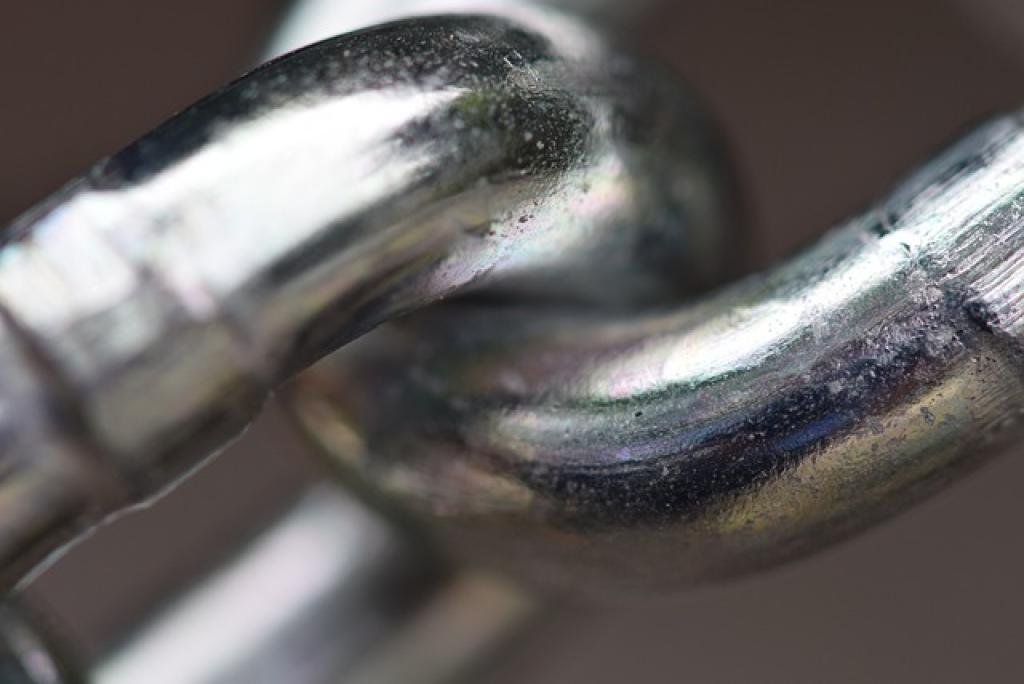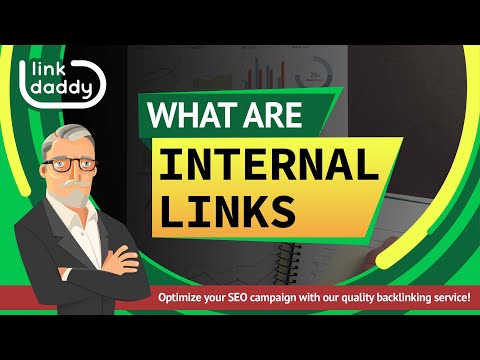Unveiling the Power of Internal Linking: Why It’s More Important Than You Think

In the bustling world of SEO and digital marketing, a lot of emphasis is placed on external backlinks and keyword optimization. Yet, tucked quietly under the radar is a powerhouse strategy that many tend to overlook: internal linking.
Think of your website as a city and internal links as the roads that connect everything smoothly. Internal linking not only helps search engines understand the structure of your site but also keeps visitors engaged longer, guiding them through the rich landscape of your content.
Surprisingly impactful, these links can enhance user experience, distribute page authority, and improve overall site health—all key factors for search engine rankings. Whether you manage a sprawling e-commerce site or a personal blog, unlocking the potential of internal linking can lead to meaningful improvements in visibility and engagement.
Stay tuned as we delve deeper into why reinforcing these "roads" in your website is more important than you might have thought!
Understanding the Basics of Internal Linking
To harness the full potential of internal linking, it’s crucial to understand the basics. At its core, an internal link is a hyperlink that connects one page of your website to another relevant page. This not only guides users on a seamless journey through your content but also signals to search engines how your website’s pages interrelate.
The Anatomy of a Good Internal Link
Crafting an effective internal link involves strategic placement and thoughtful anchor text. Anchor text is the clickable part of the hyperlink, and choosing words that accurately describe the destination page is key. This practice helps both users and search engines understand what the linked page is about.
Utilizing a natural linking structure within your content can organically connect relevant topics across your site. By doing so, your site becomes a web of interconnected information, inviting both visitors and search engines to explore further.
Coupled with this, consider the link’s relevance and the user’s intent. Each link should add value, providing useful pathways rather than distractions.
Mastering these basics can transform your internal links from mere navigational aids to powerful tools in boosting your site’s SEO and user experience. Keep these strategies in mind as we delve deeper into the nuances of effective internal linking.
The Impact of Internal Linking on SEO Performance
Internal linking plays a standout role in elevating your website’s SEO performance. By informing search engines about the hierarchy and structure of your site, these links essentially communicate which pages are the most important. This crucial information aids search engines in efficiently indexing your site, boosting its overall visibility.
Incorporating effective internal links can also enhance page authority. When pages are linked to frequently, they are perceived as more valuable, potentially improving their search rankings. This is particularly beneficial for lesser-known pages, as links from high-authority pages can distribute ranking power throughout your site.
Not only that, but, a well-planned internal linking strategy fosters a more engaged audience. By providing clear paths for exploration, you can increase the time visitors spend on your site, reducing bounce rates—a factor that search engines consider when evaluating your site’s value.
Internal links are also instrumental in indexing new content faster. Regularly updating and linking to fresh content helps search engines discover and prioritize new pages, keeping your site relevant and dynamic.
Ultimately, an effective internal linking strategy can significantly enhance your site’s SEO performance, helping you climb the search engine ladder and reach more users organically.
Strategies for Effective Internal Linking Structures
Creating an effective internal linking structure isn’t as daunting as it might seem. By implementing a few strategic practices, you can significantly boost both user experience and search engine performance.
Prioritize Your Key Pages
Begin by identifying the most important pages on your site. These could be high-value content pages or conversion pages like products or services. Focus on creating multiple internal links to these key pages from various parts of your site. This not only signals their importance to search engines but also ensures they’re easily accessible to visitors.
Using a logical hierarchy, arrange your pages in a way that mirrors the user journey. Think about your site’s main topics and subtopics, creating a clear path from general to more detailed content.
A robust link hierarchy not only organizes content effectively but also enhances user navigation and search engine indexing.
Optimize Anchor Text
Make your anchor text descriptive and natural, guiding users effortlessly without appearing forced. Avoid using generic terms like "click here" and instead incorporate relevant keywords that truly reflect the destination page’s topic.
Additionally, conduct regular audits to find orphaned pages—those with few or no links. Integrating these pages into your linking structure can help surface valuable content that might otherwise go unnoticed.
With these strategies, you’ll be well on your way to crafting an efficient internal linking framework that supports both engagement and SEO growth.

Internal Linking Best Practices & Common Mistakes to Avoid
Achieving optimal results with internal linking requires adhering to best practices while steering clear of common missteps. Let’s explore some key approaches and pitfalls to be aware of.
Balance is Key
One of the golden rules is balance. While linking is crucial, overloading your content with too many links can overwhelm users and dilute the authority passed to each linked page. Aim for a natural number of links that enhance the content without overshadowing it.
Another best practice is to regularly update your links. As you add new content or change your site structure, revisit your links to ensure they still make sense and provide the most up-to-date paths for your users.
Avoiding Common Pitfalls
A frequent mistake is using the same anchor text repeatedly. Diversify word choice to maintain a natural feel and provide different keyword signals to search engines.
It’s also important not to create links that lead to irrelevant content. Every link should serve a purpose, guiding users to related and valuable information.
Remember, broken links can hinder user experience and SEO performance. Regularly check your site for broken links and promptly fix them to maintain a seamless navigation experience.
By focusing on these practices and avoiding common errors, you can strengthen your internal linking strategy, enhance site usability, and boost search visibility.
Maximizing User Experience Through Internal Linking
Internal linking is a powerful tool not just for search engines but also for enriching user experience. A well-designed linking strategy guides visitors intuitively through your site, transforming wandering into purposeful exploration.
Creating logical and meaningful pathways helps retain visitors longer. By linking related content, you facilitate deeper dives into subjects of interest, encouraging users to engage with more of your content. This increased engagement can translate into higher satisfaction and stronger relationships with your audience.
Links that anticipate user needs add exceptional value. Consider common questions or needs your audience might have and strategically place links to pages that directly address these interests. This proactive approach can reduce user frustration and increase time spent on your site.
By the same token, clarity is paramount. Clear, descriptive anchor text helps users understand exactly where each link will take them, reducing confusion and ensuring a smooth, frustration-free experience.
Feedback is also invaluable; regularly assess your site’s journey from a user’s perspective. Interact with your site as a visitor would, making adjustments to internal links that may improve flow and usability.
By focusing on these aspects, internal linking can become a cornerstone of an exceptional user experience, enhancing satisfaction and fostering a loyal audience base.
The Relationship Between Internal Linking & Site Authority
Internal linking significantly influences the perception and distribution of site authority, a crucial factor in search engine ranking. As page authority is passed from one page to another through links, a well-thought-out internal linking strategy can optimize the flow of authority across your site.
Strategic Internal Linking for Authority
By directing authority towards priority pages, internal linking helps in highlighting crucial content. For example, linking from a high-authority page to a lesser-known but important page can help boost the latter’s visibility and authority in search engines.
This method of strategically channeling authority ensures your most valuable pages are given the prominence they deserve. It also helps distribute authority naturally throughout the site, preventing excessive concentration on a few pages.
As well as this, internal links can prevent the dilution of authority that occurs when only external links are relied upon. Boosting in-house links thus helps maintain the strength and integrity of your site’s authority as a whole.
Taking these steps in internal linking not only sustains but can enhance your site’s stability and authority. This, in turn, contributes to improved ranking potential and a stronger online presence.
Through deliberate and effective internal linking, you reinforce your site’s architecture and its standing in the digital landscape, making it both user-friendly and authoritative.
Measuring the Success of Internal Linking Strategies
Evaluating the effectiveness of your internal linking strategy is essential to maximize its potential. Success can be measured through several key metrics that reflect both user engagement and SEO performance.
Key Metrics to Track
One vital metric is the bounce rate. A decrease in this rate typically indicates that visitors are exploring more pages, suggesting that internal links are successfully guiding them through your site.
Additionally, monitoring the average session duration provides insight into how long users engage with your content. Longer sessions often mean that well-placed links are keeping visitors interested.
Tracking changes in page views per session can also offer valuable feedback. An increase in this metric is a strong indication that your linking strategy is effectively promoting exploration of your site.
In light of this, watch for the improvement in rankings of linked pages. Increased visibility in search engine results can demonstrate the successful passage of authority via internal links.
Lastly, use tools like Google Analytics to trace the pathways users take, understanding which links lead to conversions or high engagement.
By closely analyzing these metrics, you can refine your internal linking strategy, ensuring it continually enhances user experience and supports your SEO goals.
The Bottom Line: Integrating Internal Linking for Sustainable SEO Growth
As we’ve unraveled the multifaceted role of internal linking in your SEO toolkit, it’s clear that these links are more than mere connectors. They serve as the foundation of an effective, user-friendly, and authoritative website. The seamless flow they create not only guides users intuitively but also strengthens your site’s relationship with search engines.
Implementing strategic internal linking can be transformative, both immediately in terms of user engagement and long-term for organic growth. By emphasizing key pages, wisely distributing authority, and enhancing user navigation, internal links can dramatically improve your site’s performance.
Yet, like any SEO strategy, internal linking requires ongoing attention and adaptation. Monitoring the impact of your links through metrics like bounce rate and session duration can provide valuable insights. This data-driven approach allows you to continuously refine your strategy, ensuring that your links remain relevant and effective.
Another key point is, internal linking complements external SEO efforts, creating a holistic and sustainable approach to attracting and retaining traffic. By integrating these links thoughtfully across your content, you establish a site structure that supports growth while also providing value to your audience.
In conclusion, embracing the power of internal linking is not just about improving rankings—it’s about building a cohesive and compelling digital presence. By weaving a network of links that naturally lead users through your site, you can foster a more engaging experience that not only captivates visitors but also earns the favor of search engines for sustained success.



